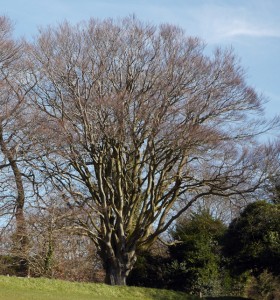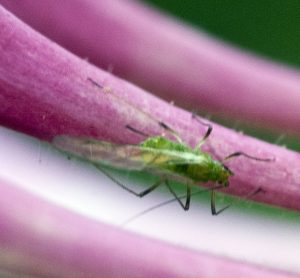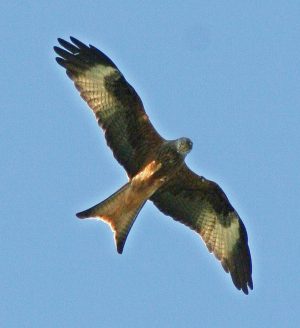woodland web updates 17

Beech and climate change.
Beech trees are important (ecologically and financially) in the woodlands and forests across Europe. Beech has a wide distribution from Southern Europe up into Scandinavia. However, the beech has a relatively shallow root system and this makes it susceptible to drought. In recent times, as a result of climate change, extreme weather events such as drought have become more common. Analysis of beech tree rings (from 5000+ trees) across Europe suggest that whilst those Sweden and Norway are growing quite well those in Southern Europe are not, in fact growth may have declined by as much as 20%. Current climate projections suggest that beech growth / productivity in southern areas may decline further, with increasing mortality.
Warning signals.
 Many animals are able to send signals to other members of their species warning them of imminent danger, such signals can be warning sounds or ‘scents’. The scents may be in the form of pheromones, essentially ‘airborne hormones’. Now there is growing evidence that plants may be able to act in a similar way. For example, if mint leaves are damaged by a insect herbivore attack, then field mustard and soybean plants growing in the vicinity respond to the volatile chemicals released by the mint and activate their leaf defence systems (this often involves creating an unpalatable taste). The volatile compounds released (during damage) are ‘oils’ or terpenes, like β-Ocimene. β-Ocimene has a sweet, woody fragrance but it is not clear how it stimulates other plants into activating the genes for their defence mechanisms. Research is underway at the Tokyo University of Science.
Many animals are able to send signals to other members of their species warning them of imminent danger, such signals can be warning sounds or ‘scents’. The scents may be in the form of pheromones, essentially ‘airborne hormones’. Now there is growing evidence that plants may be able to act in a similar way. For example, if mint leaves are damaged by a insect herbivore attack, then field mustard and soybean plants growing in the vicinity respond to the volatile chemicals released by the mint and activate their leaf defence systems (this often involves creating an unpalatable taste). The volatile compounds released (during damage) are ‘oils’ or terpenes, like β-Ocimene. β-Ocimene has a sweet, woody fragrance but it is not clear how it stimulates other plants into activating the genes for their defence mechanisms. Research is underway at the Tokyo University of Science.
Lead and Birds of Prey.
 Birds and Prey feed upon flesh they scavenge (like the entrails of deer, or dead pheasants) or from animals they capture. The trouble is that often this flesh is riddled with bits of lead shot. Lead is a poison, and is not easily eliminated from the body. Animals injured by lead shot may suffer a slow and agonising death. Those that feed upon them also accumulate lead in their bodies, which affects their physiology and behaviour. Now Cambridge based scientists have studied the lead levels in a variety of birds of prey. They looked at lead levels in the livers of some 3000 raptors.
Birds and Prey feed upon flesh they scavenge (like the entrails of deer, or dead pheasants) or from animals they capture. The trouble is that often this flesh is riddled with bits of lead shot. Lead is a poison, and is not easily eliminated from the body. Animals injured by lead shot may suffer a slow and agonising death. Those that feed upon them also accumulate lead in their bodies, which affects their physiology and behaviour. Now Cambridge based scientists have studied the lead levels in a variety of birds of prey. They looked at lead levels in the livers of some 3000 raptors.
Birds, like eagles, are worst affected as they are long lived, breed later in life and rear relatively few young per year. For a number of species, they have been able to estimate the % reduction in population size that the lead is responsible for.
| Species | Estimated % loss of population | ||
| White tailed eagle | 14 | ||
| Golden Eagle | 13 | ||
| Griffon Vulture | 12 | ||
| Red Kite & Western Marsh Harrier | 3 |
Buzzard populations are estimated to be 1.5% smaller, which may not seem much but it equates to the loss of some 22,000 birds.
Lead is still used in shotgun cartridges, many pheasants are still killed with lead based ammunition, despite requests to hunting groups to switch to non-toxic gunshot (by 2020).
Full details of this work can be found here.
Warmer autumns and butterflies.
Green veined white butterflies are common in the U.K. and Europe. Researchers in Sweden have been looking at how they might respond to warmer and longer autumn weather. Under laboratory conditions, they exposed the chrysalises (over-wintering stages) of the butterfly to warmer autumnal conditions. They found that the chrysalises used more energy and lost more weight under these conditions, and were less likely to survive to the adult / imago stage in the following Spring. With global warming affecting our climate, it could be that populations of this butterfly could struggle as time passes.
Comments are closed for this post.
